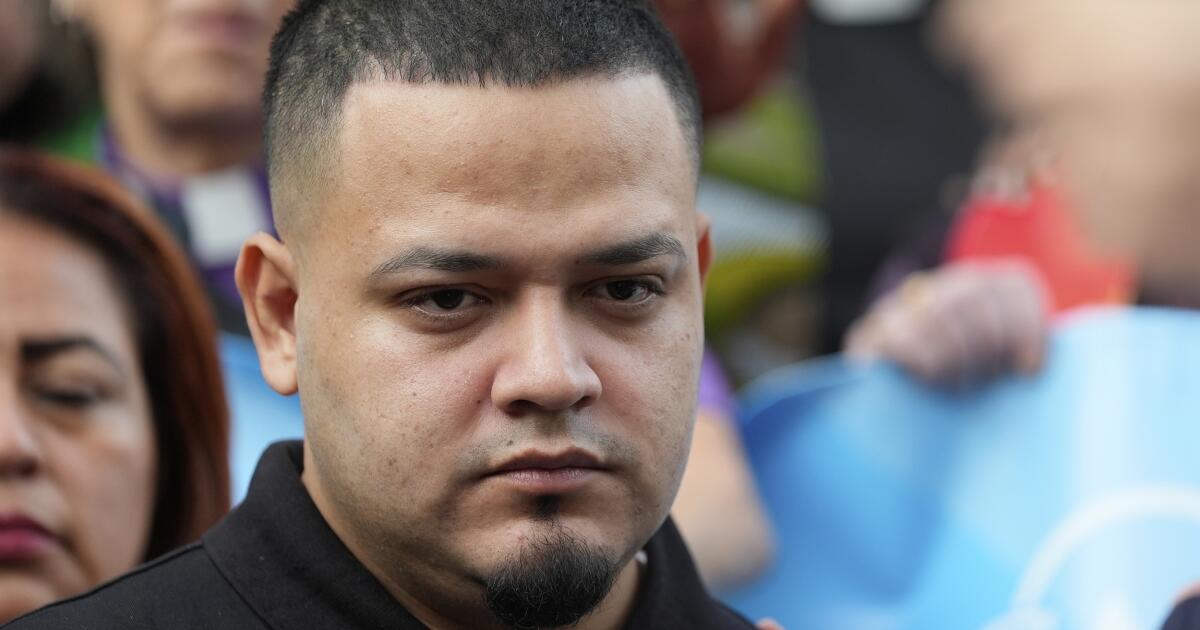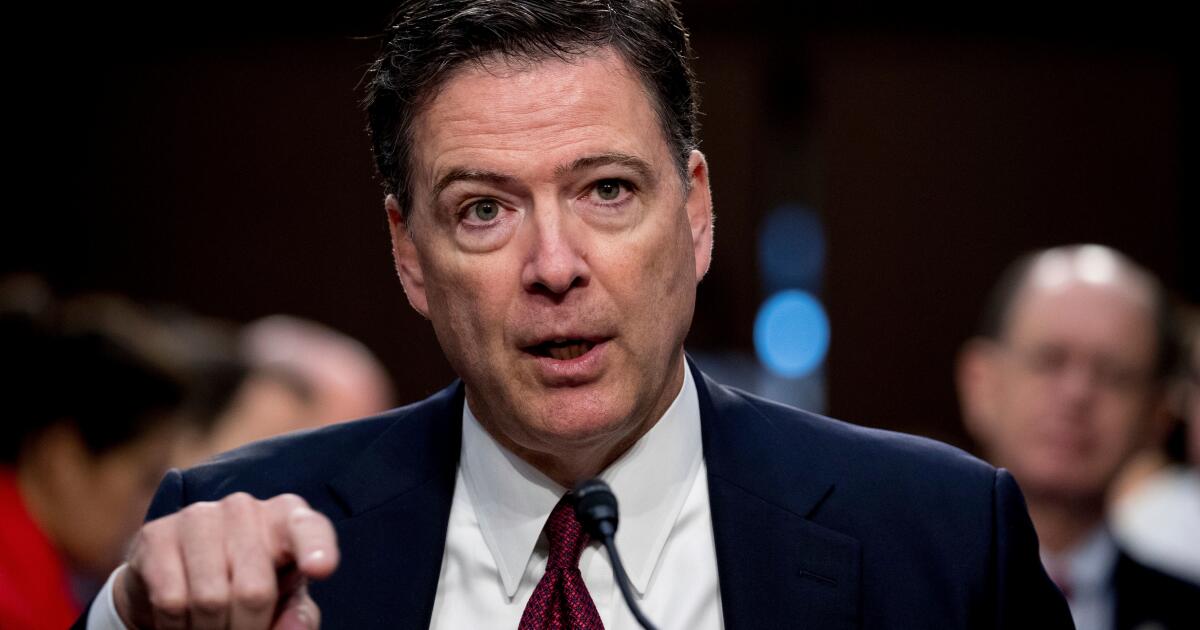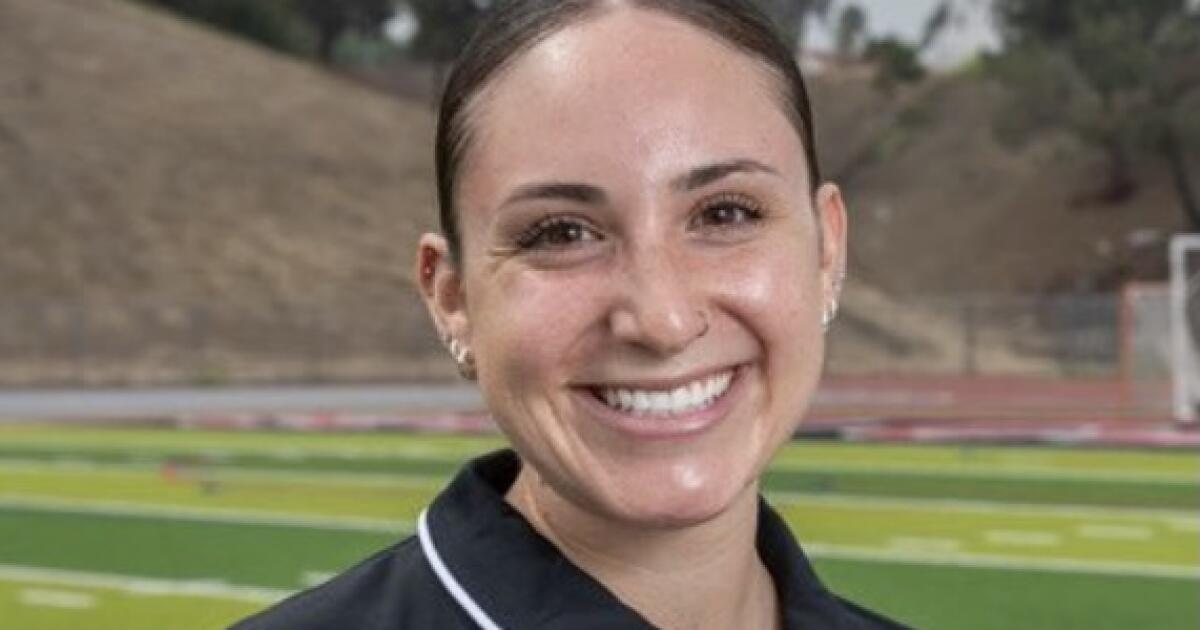Trump judge nominee, 36, who has never tried a case, wins approval of Senate panel
Reporting from Washington — Brett J. Talley, President Trump’s nominee to be a federal judge in Alabama, has never tried a case, was unanimously rated “not qualified” by the American Bar Assn.’s judicial rating committee, has practiced law for only three years and, as a blogger last year, displayed a degree of partisanship unusual for a judicial nominee, denouncing “Hillary Rotten Clinton” and pledging support for the National Rifle Assn.
On Thursday, the Senate Judiciary Committee, on a party-line vote, approved him for a lifetime appointment to the federal bench.
Talley, 36, is part of what Trump has called the “untold story” of his success in filling the courts with young conservatives.
UPDATE: Brett J. Talley withdraws nomination »
“The judge story is an untold story. Nobody wants to talk about it,” Trump said last month, standing alongside Senate Majority Leader Mitch McConnell (R-Ky.) in the White House Rose Garden. “But when you think of it, Mitch and I were saying, that has consequences 40 years out, depending on the age of the judge — but 40 years out.”
Civil rights groups and liberal advocates see the matter differently. They denounced Thursday’s vote, calling it “laughable” that none of the committee Republicans objected to confirming a lawyer with as little experience as Talley to preside over federal trials.
“He’s practiced law for less than three years and never argued a motion, let alone brought a case. This is the least amount of experience I’ve seen in a judicial nominee,” said Kristine Lucius, executive vice president of the Leadership Conference on Civil and Human Rights.
The group was one of several on the left that urged the Judiciary Committee to reject Talley because of his lack of qualifications and because of doubts over whether he had the “temperament and ability to approach cases with the fairness and open-mindedness necessary to serve as a federal judge.”
Some conservatives discount the ABA’s rating. “The ABA is a liberal interest group. They have a long history of giving lower ratings to Republican nominees,” said Carrie Severino, counsel for the Judicial Crisis Network, which supports Trump’s nominees. She said past liberal nominees have been rated as qualified even if they had little or no courtroom experience.
Talley does have some other qualifications, some traditional, others less so. He grew up in Alabama and earned degrees from the University of Alabama and Harvard Law School. He clerked for two federal judges and worked as a speech writer on the presidential campaign of Mitt Romney. And, like many people who eventually became federal judges, he became the protege of someone who became a senator.
In Talley’s case, the mentor was Republican Sen. Luther Strange, the former Alabama state attorney general who was appointed to the Senate in February to replace Jeff Sessions, who left the Senate to become U.S. attorney general. Talley worked for Strange as a deputy.
Typically, senators play the lead role in recommending nominees for the federal district judgeships in their state. Talley also had something of an inside track. This year, when Sessions moved to the attorney general’s post, Talley took a job in the Justice Department’s office that selects judicial nominees.
Trump and McConnell have succeeded in pushing judicial nominees through the Senate because the Republicans have voted in lockstep since taking control of the chamber in 2014.
When Trump took office in January, there were more than 100 vacant seats on the federal courts, thanks to an unprecedented slowdown engineered by McConnell during the final two years of President Obama’s term. The Senate under GOP control approved only 22 judges in that two-year period, the lowest total since 1951-52 in the last year of President Truman’s term. By contrast, the Senate under Democratic control approved 68 judges in the last two years of George W. Bush’s presidency.
The best-known vacancy was on the Supreme Court. After Justice Antonin Scalia died in February 2016, McConnell refused to permit a hearing for Judge Merrick Garland, Obama’s nominee. Trump filled the seat this year with Justice Neil M. Gorsuch.
The Alliance for Justice, which tracks judicial nominees, said Trump’s team is off to a fast start, particularly when compared with Obama’s first year. By November 2009, Obama had made 27 judicial nominations, including Justice Sonia Sotomayor. Trump has nominated 59 people to the federal courts, including Justice Gorsuch. That’s also a contrast with Trump’s pace in filling executive branch jobs, where he has lagged far behind the pace of previous administrations.
Liberal advocates are dismayed that Republicans have voted in unison on Trump’s judges.
“So far, no one from his party has been willing to stand up against him on the agenda of packing the courts,” said Marge Baker, executive vice president of People for the American Way.
Last month, when the Judiciary Committee held a hearing on several other nominations, Sen. Dianne Feinstein (D-Calif.) asked Talley about his fervent advocacy of gun rights. In a blog post titled “A Call to Arms,” he wrote that “the President and his democratic allies in Congress are about to launch the greatest attack on our constitutional freedoms in our lifetime,” referring to Obama’s proposal for background checks and limits on rapid-fire weapons following the 2012 shootings at Sandy Hook Elementary School in Newtown, Conn.
“The object of that war is to make guns illegal, in all forms,” Talley wrote. The NRA “stands for all of us now, and I pray that in the coming battle for our rights, they will be victorious,” he added.
A month later, he reprinted a “thoughtful response” from a reader who wrote: “We will have to resort to arms when our other rights — of speech, press, assembly, representative government — fail to yield the desired results.” To that, he wrote: “I agree completely with this.”
When pressed, he told the senators he was “trying to generate discussion. I wanted people to be able to use my blog to discuss issues, to come together and find common ground.”
In a follow-up written question, Feinstein asked him how many times he had appeared in a federal district court.
“To my recollection, during my time as Alabama’s deputy solicitor general, I participated as part of the legal team in one hearing in federal district court in the Middle District of Alabama,” he replied.
On Thursday, the Judiciary Committee approved White House lawyer Greg Katsas on a 11-9 vote to serve on the U.S. Court of Appeals for the District of Columbia, then approved Talley on another 11-9 vote. The nominations now move to the Senate floor, where a similar party-line result is expected.
Major questions before the Supreme Court this fall »
Twitter: DavidGSavage
UPDATES:
9:50 a.m.: This article was updated with comments from the Judicial Crisis Network.
This article was originally published at 8:10 a.m.





